Used oil analysis is one of the most potent tools in your maintenance arsenal. It provides a simple, inexpensive and accurate glimpse inside your engine or equipment to help gauge lubricant and component condition, without removing a bolt or bloodying a knuckle. Here’s how to perform oil analysis.
What is oil analysis?
Oil analysis is the process of chemically analyzing a lubricant sample to determine the condition of the lubricant itself as well as the engine or other lubricated components it interacts with.
To have your oil analyzed, you must take a sample of the lubricant and ship it to a qualified laboratory. Technicians subject the lubricant to a range of tests to determine the concentration of wear metals, fuel dilution, the lubricant’s total base number (TBN), oxidation and other information. The lab will return a report on the lubricant’s condition and includes a brief explanation and recommendations for future service.
Benefits of oil analysis
Determining the condition of the oil inside your engine offers several benefits, all of which can save you time, money and hassle in the future.
- Maximize oil life
Monitoring the condition of the oil allows you to optimize drain intervals, so you can maximize the fluid’s service life. Performing fewer oil changes minimizes maintenance costs and reduces downtime for businesses that depend on equipment and vehicle availability. It also reduces the amount of waste oil, which helps the environment.
- Prevent equipment failure
Oil analysis identifies dirt, wear particles, fuel dilution, coolant and other contaminants that can cause catastrophic failure or significantly shorten equipment life, allowing you to proactively fix problems before they happen.
- Increase resale value
Oil analysis creates documentation of the equipment’s history and performance, which helps it maintain its value.
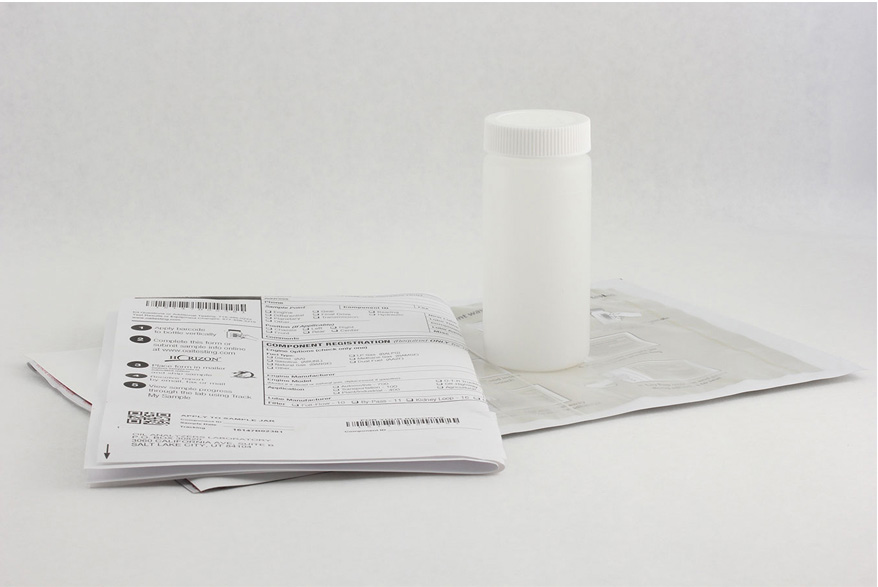
How to perform oil analysis
It is easy to perform oil analysis by obtaining an oil analysis kit from Oil Analyzers Inc. For this example, we used a 1998 Toyota* Corolla.* This vehicle was also used to demonstrate testing engine compression. Here’s what you’ll need to perform oil analysis:
- Oil analysis kit
- Sampling pump with hose
- Gloves
- Rag’
Warm up the engine
Warm oil flows more easily through the sampling pump and circulating the oil prior to drawing a sample ensures consistency. Run the vehicle for a couple of minutes; there’s no need to reach operating temperature.
Draw the oil sample
Using a vacuum pump is the easiest and cleanest way to accomplish this, allowing access to the oil sump through the dipstick tube. Thread the clean sample bottle included in the testing kit to the pump. Attach a clean hose (the length of the dipstick plus one foot) to the top of the pump and tighten the lock ring.
PRO TIP: Trim the end of the sampling hose at a 45-degree angle to make insertion easier.
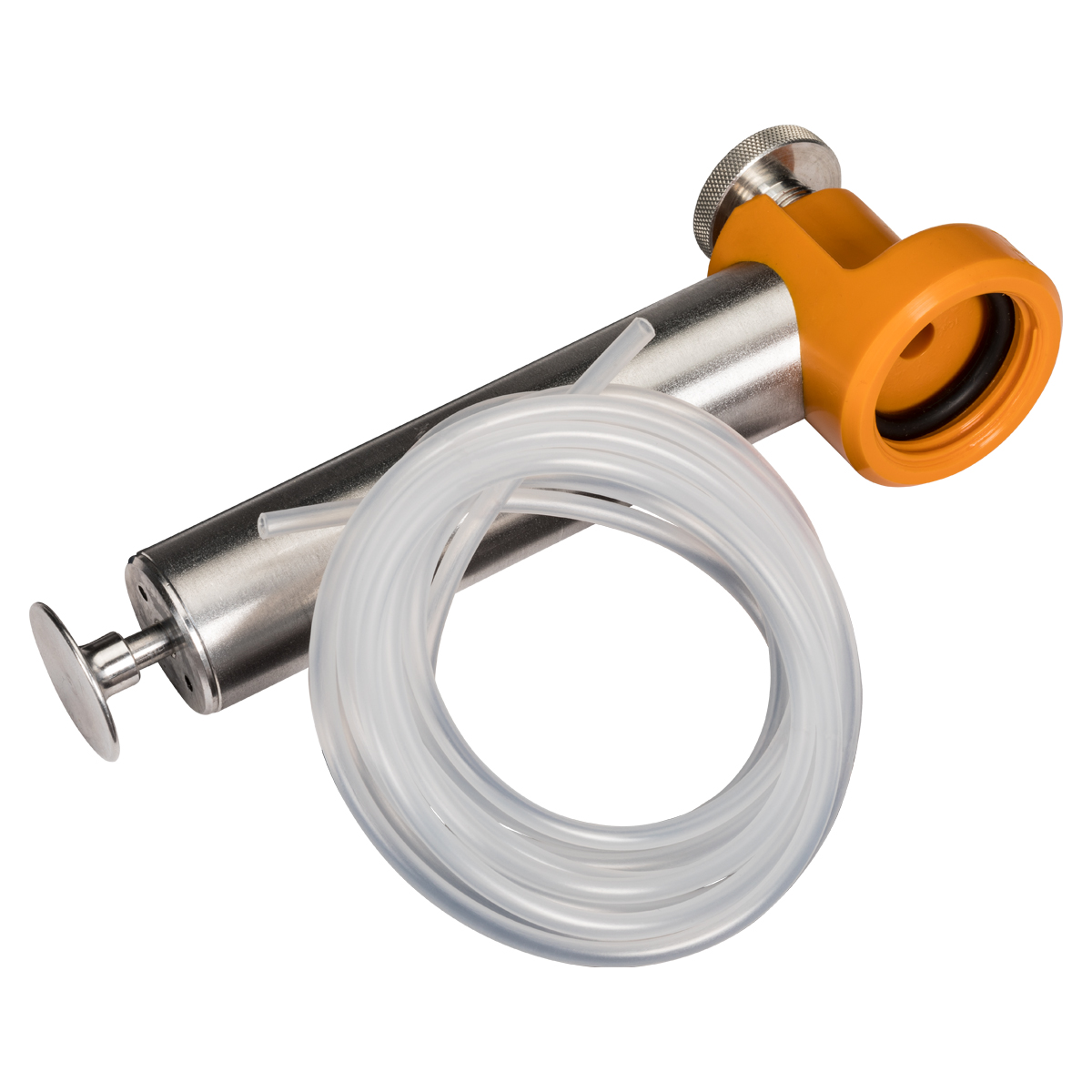
Insert the hose into the dipstick tube until it bottoms out in the oil sump, then retract the tube about an inch, so it won’t pull contaminants off the bottom of the oil pan. Pump the plunger until the bottle is 3/4 full.

Sometimes it’s impossible to draw an oil sample from the top, so you’ll have to pull the sample straight from the drain hole, which is messier. Simply allow the lubricant to drain for a few seconds so contaminants that have settled around the drain plug are flushed out before catching a sample directly in the bottle. Quickly reinstall the drain plug and top-off the reservoir.
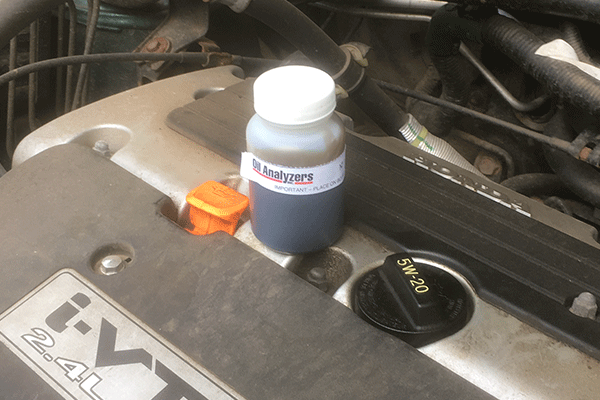
Ship the oil sample
Most oil analysis kits come with the appropriate labels and directions for shipping it to a lab. Follow the instructions, then sit tight until the results arrive.
Read the results
Oil Analyzers Inc. typically returns results either by email or via an online portal about two business days after receiving the sample. The lab report includes application information, elemental analysis and recommendations. The amount of information varies depending on the test kit you choose.



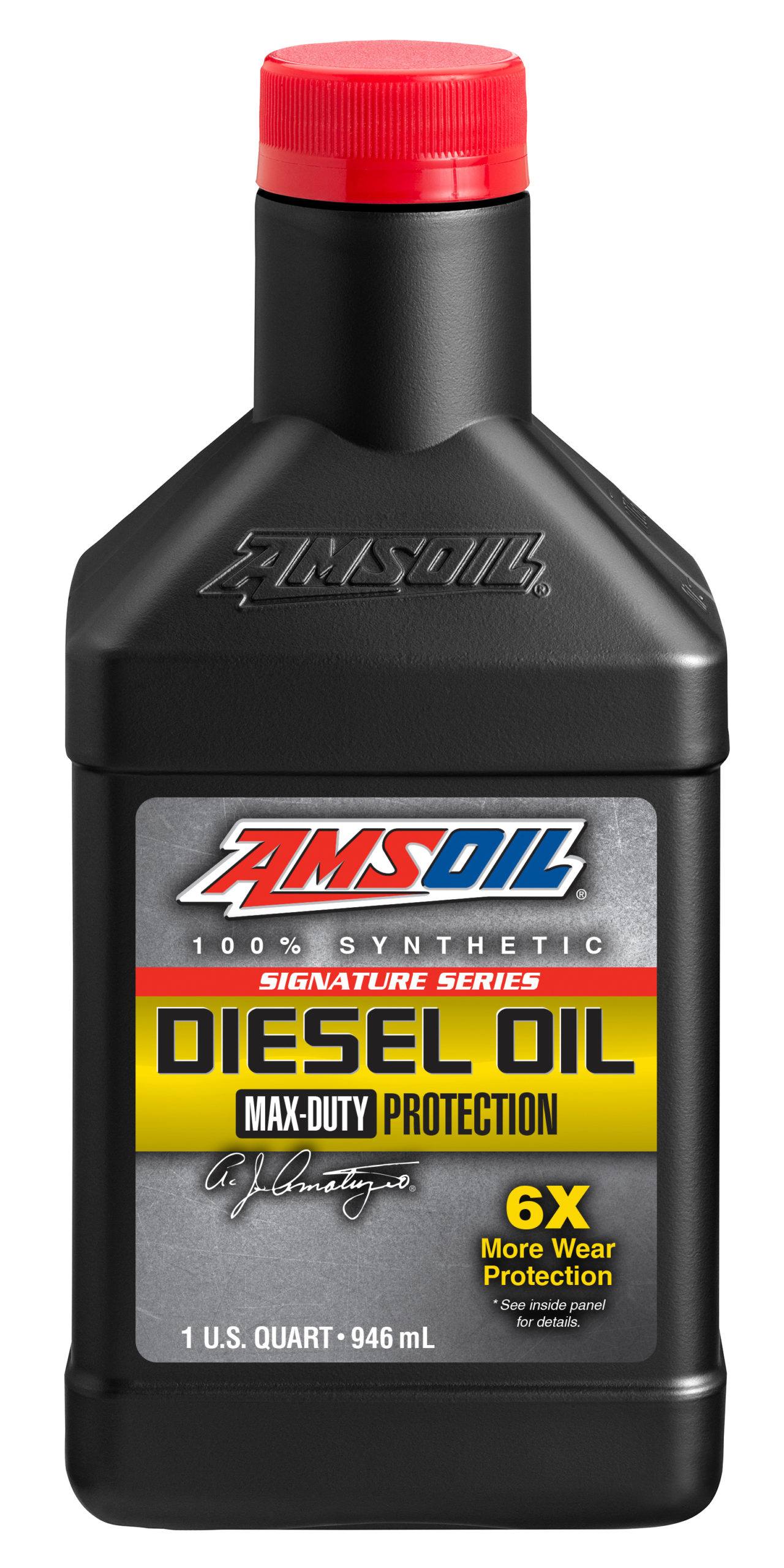

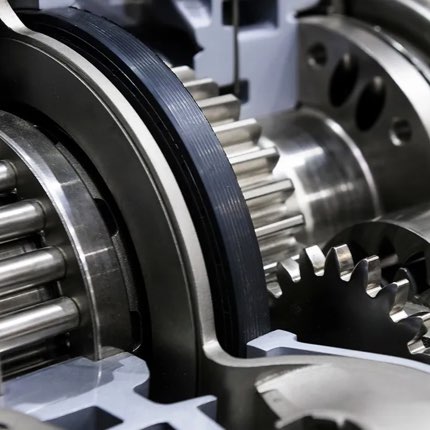
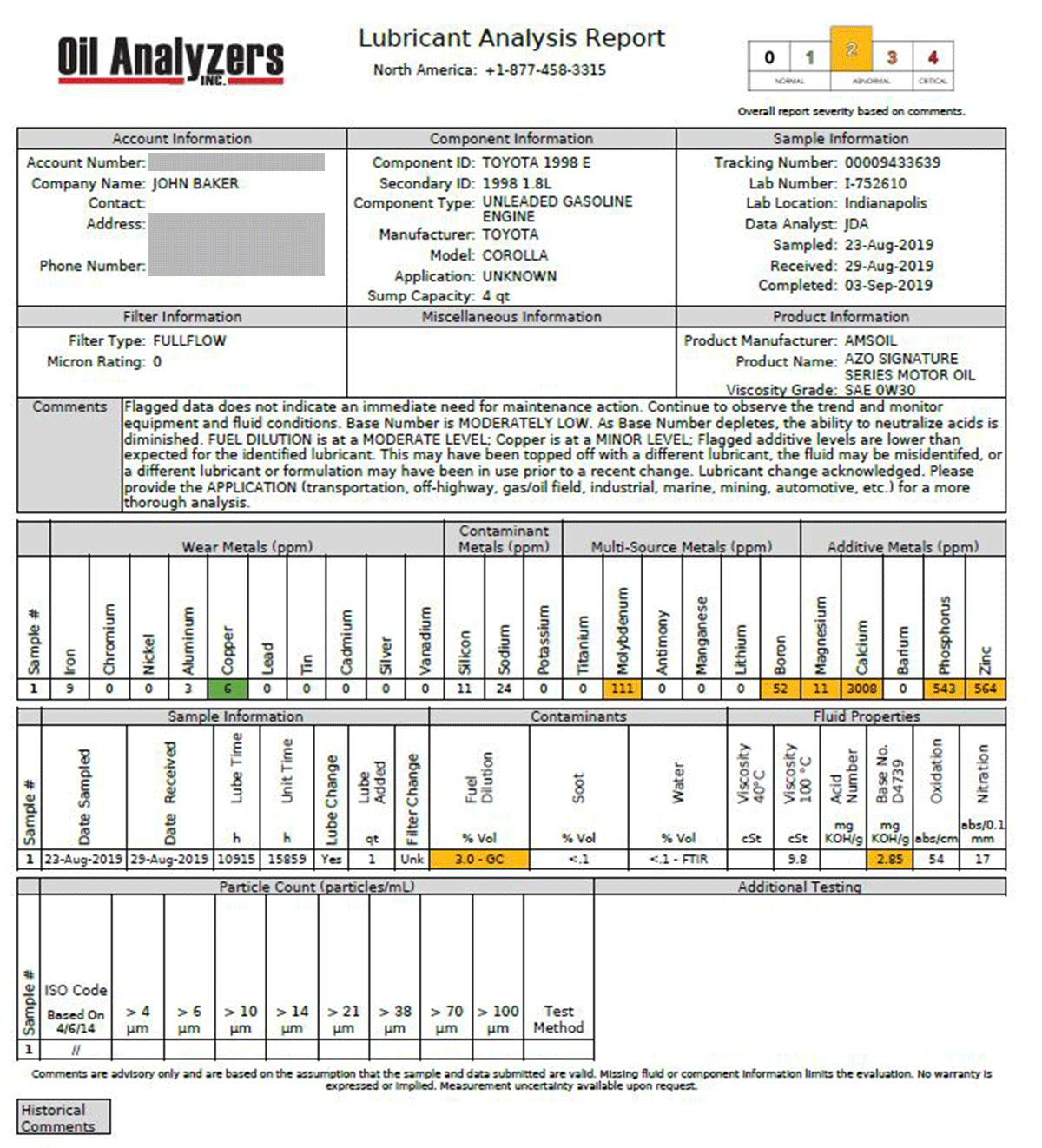




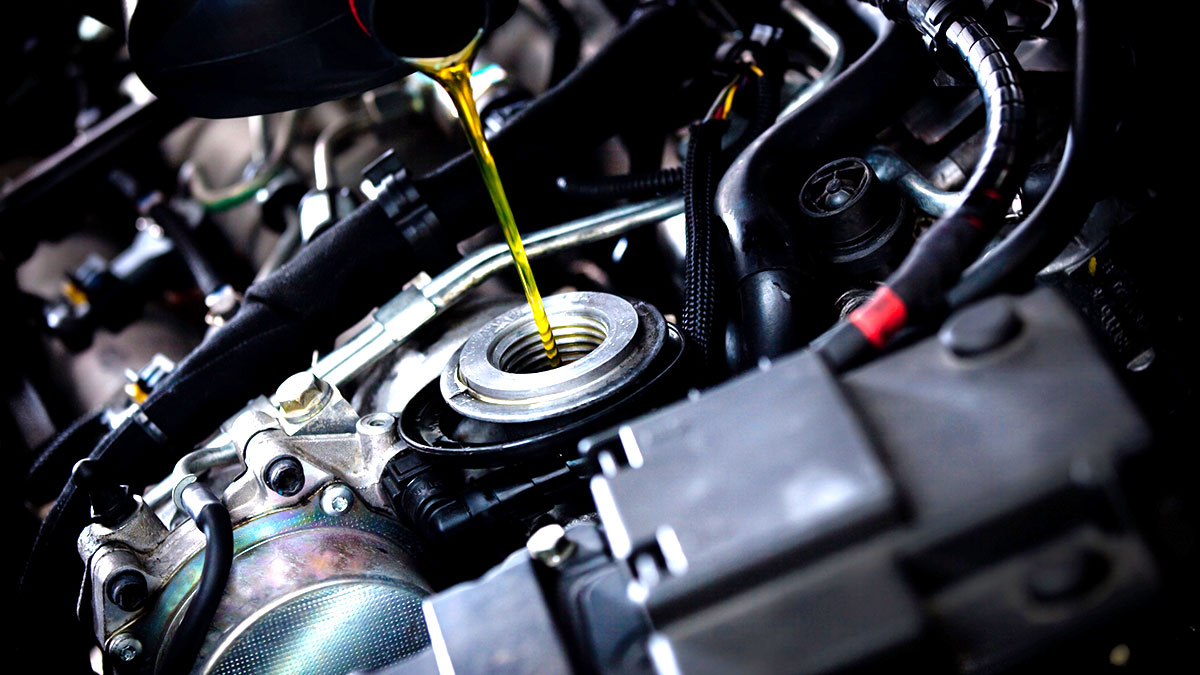
If I switch form conventional to synthetic! My change oil monitor tells me to change oil. Should I do it or disregard the reminder and if so. Should I make my own calculations.
Hi Jim,
Your oil-life monitor has no way of distinguishing between conventional or synthetic. If you use AMSOIL synthetic motor oil, follow the oil-change recommendations on the label and you’ll be fine. We guarantee the oil’s performance according to our service-life recommendations, even if it extends beyond what your oil-life monitor recommends. If using another oil and you’re unsure of what the oil manufacturer recommends, stick to what the oil-life monitor recommends.
Thanks,
John
I read your article and find it interesting. I have a problem with manufacturers. I have a 2008 Ford F250 Harley Davidson with a 6.4L diesel. Since 2012 the 6.4 eng has had every oil analysis, 7 of them, some at 1400 miles to 10k miles read abnormal to severe. When brought to the manufacturer’s attention they are not interested in any fix. This vehicle has 64k miles and Ford warranty, of which I renew as it is near renewal. Ford will not fix the fuel dilution problem and says, change the oil. So even at 1400 miles, it’s always change the oil. They are not going to fix the Problem. What do you Recommend?
Hi Carl,
I’m sorry to hear about the problems you’re having with your engine. It must be frustrating when the OEM won’t solve the problem.
Are your driving conditions contributing to excessive fuel dilution? Do you idle a lot? Take frequent short trips that don’t allow the oil to fully warm up? If so, try reducing idle time if possible and driving enough to fully warm the engine.
It’s also possible you have a leaking or sticky injector. You can try a fuel additive, like AMSOIL Diesel Injector Clean, to help. While it’s a bit of a shot in the dark, it’s a cheap fix if it makes a difference.
Lastly, use the best synthetic oil you can find to help combat the negative effects of fuel dilution. Of course, we recommend AMSOIL Synthetic Diesel Oil. A good synthetic will maintain viscosity better than conventional oils and help protect your engine longer.
I wish I had a fool-proof fix, but if the engine indeed has a flaw that contributes to excessive fuel dilution, all you can do short of dropping the money needed to fix it is maintain it as best you can.
Best of luck,
John